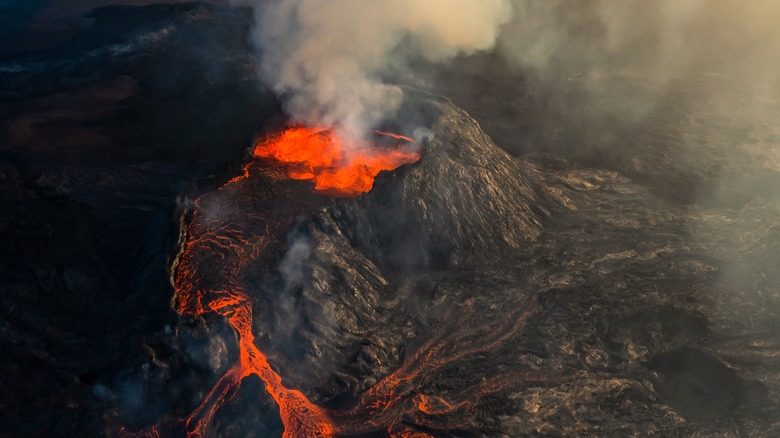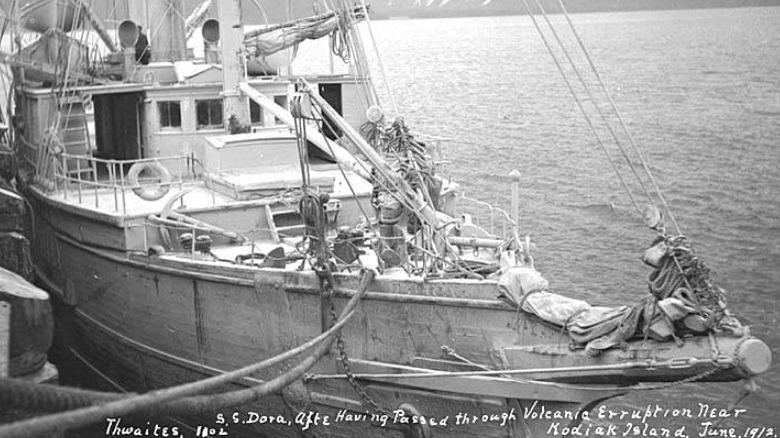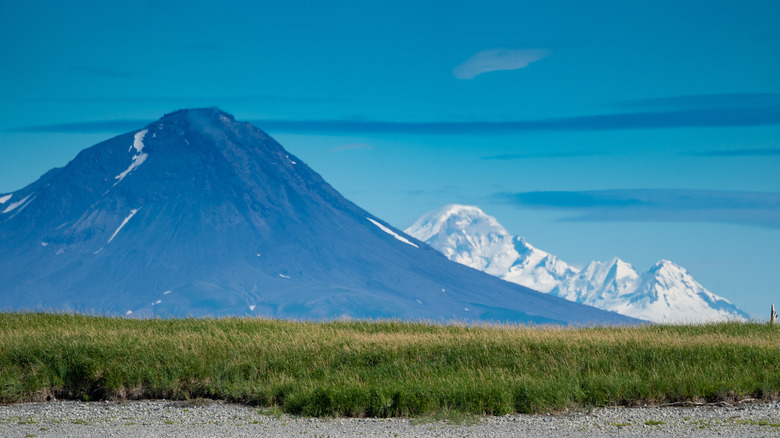The Largest Volcanic Eruption In The US Didn't Actually Kill Anyone
According to the U.S. Geological Survey, there are 1,350 potentially active volcanoes worldwide, with 161 of those located in the United States and its territories. The majority of these are located throughout the Alaskan Peninsula, the islands of Hawaii, and Cascade mountain range along the west coast. Volcanic eruptions are fairly common in the United State; they happen nearly every year in Alaska, and the Kilauea volcano in Hawaii, one of the most active on Earth, has erupted nearly continuously since 1983 (via American Geosciences Institute).
Perhaps the most famous volcano in the United States is Mount St. Helens. Located in southwestern Washington state along the Cascade mountain range, in 1980 Mount St. Helens was responsible for one of the largest and most devastating earthquakes in the United States. The eruption left 57 people dead, layers of mud and debris as far as 17 miles away, and produced a gas and ash column about 16 miles high (via Britannica). According to the National Park Service, the Mount St. Helens eruption created about 0.1 cubic miles of erupted magma volume. While this is a sizable eruption, it pales in comparison to the largest eruption ever in the United States.
The impact
In the days leading up to June 6, 1912, severe earthquakes were felt throughout Katmai village on the Shelikof Strait coast of the Alaskan Peninsula, prompting the few residents to flee the area (via National Park Service). These earthquakes were the first signs of a massive, impending volcanic eruption whose impact would be felt throughout the whole world. On the afternoon of June 6, the Novarupta (Latin for "new break") volcano, located in what is now the Katmai National Park and Preserve, erupted in what was the largest volcanic eruption of the 20th century (via National Park Service).
The first eruption cloud was seen by the people aboard the Dora (above), a steamer in the Shelikof Strait at the time, and soon they were caught in absolute darkness caused by the ash that wouldn't relent until the next morning (via National Park Service). This was just the beginning of the eruption and its ensuing damage. In Kodiak, about 100 miles from the volcano, the ash cloud was so thick that the darkness it created made it nearly impossible to see a lantern held an arm's length away (via National Park Service). According to Geology.com, the town was covered in up to one foot of ash, and some buildings collapsed under the weight. The initial blast was so loud that it could be heard in Juneau, roughly 750 miles away, about an hour after it occurred (via Britannica).
The explosion
In all, the eruption lasted 60 hours and roughly three cubic miles of magma were expelled, about 30 times more than the Mount St. Helen's eruption (via National Park Service). The location of the volcano, in a sparsely inhabited part of Alaska, was fortunate, and meant that there were no human deaths and limited property damage. The impact of the Novarupta eruption, however, could be felt around the world.
According to the National Park Service, an ash cloud more than 1,000 miles wide and reaching heights of nearly 20 miles covered most of southern Alaska and the Yukon Territory following the explosion. For context, New York City is about 1,000 miles from Des Moines, Iowa, according to Distance From To. The winds pushed the ash cloud east, and by the time the eruption had ended it had reached western Canada and several western U.S states; by June 17, the cloud had reached all the way to Algeria (via National Park Service). By blocking out the sun's rays the ash cloud lowered average temperatures in the Northern Hemisphere by about two degrees Fahrenheit for more than a year (via National Park Service).
While volcanic eruptions are common throughout the world, there hasn't been one close to this magnitude since. It is much easier to monitor and predict volcanoes with today's technology, although another eruption on the Novarupta scale would be devastating, no matter the warning.


